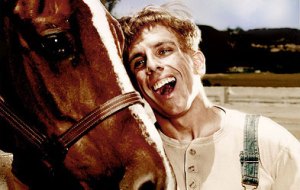Facebook. Just about everybody is on it.
Consequently, many firms are joining the ever expanding and evolving social networking platform to put their brands where their current and potential customers are.
Typically the goal here is to use Facebook to encourage consumers to positively engage with your brand, share content with their friends, and generally ‘do the leg work’ of traditional marketing – but with a much higher level of interactivity and often at a lower cost.
A common way that the success of Facebook campaigns is measured is through the amount of ‘likes’ it gets. If a consumer ‘likes’ your page, it typically shows up on their profile page and in their public newsfeed, promoting their friends to see it.
‘Likes’ also provide feedback about brands and marketing campaigns, and provide a simple quantitative measure of success.
But whilst it’s always valuable to know who likes your brand, in many cases it would be equally valuable to know who dislikes your brand.
So what about a ‘dislike’ button? And why would it be valuable for your brand?
Alec looks at 5 surprising ways in which your brand could benefit from a ‘dislike’ button.
1. Gain a better understanding of marketing effectiveness

What do you Dislike?
Your brand might have 1,000 likes. Great. But in reality it might also have 2,000 ‘dislikes’ which are essentially invisible. Therefore without a way to track this via a dislike button, you might be inflating the success of your brand and its marketing campaigns.
Therefore, a ‘dislike’ button would facilitate a more accurate and accountable net measurement (i.e. likes minus dislikes), rather than just a gross measurement (total likes) of campaign effectiveness.
2. Get to know who doesn’t like you
A great deal of marketing research, although valuable, is about discovering, understanding and profiling who likes your brand and regularly purchases it in, thus allowing you to better sell your brand.
However, it can be equally as valuable (if not more so) to better understand the people actively dislike like your brand. It would enable you to more clearly define your target market and may highlight ways to improve your product or service.
3. Recover dissatisfied customers
A ‘dislike’ button may highlight customers who have had a bad experience and require some feedback from your firm. Synch your Facebook page with your loyalty database and you have a ready-made list of high traffic customers who may now ‘dislike’ your brand, without lodging an official complaint.
This would give your firm an opportunity to recover dissatisfied customers.
4. Novel ways to connect with and surprise customers
Consumers who click the ‘dislike’ button would demonstrate that are aware of and to some extent, engaged with your brand. In many ways a lot of the hard work is done. Now you just have to provide a reason for the consumer of turn their frown upside down.
What about sending a surprise voucher to all the customers that ‘dislike’ your brand? Crazy? Perhaps, but it would certainly turn some heads and maybe convince some non-believers to try your brand for the first time or give it a second chance.
5. Embrace your brand’s enemies

The "us against them" nature of brand loyalty: The more 'dislikes' the better
This may not be effective for every brand, but for some brands it would foster loyalty amongst supporters to have a vocal and visible crowd who dislike your brand. Many brands thrive on having enemies and a ‘dislike’ button would be a way to identify this common enemy.
Think sporting teams for example: Manchester United, the New York Yankees, the LA Lakers, the Dallas Cowboys and the Collingwood Magpies, are some iconic brands which thrive on the love/hate mentality of their respective marketplaces , whilst encouraging an “everybody against us” mantra amongst their fans.
Thus, they are examples of brands which would benefit immensely from thousands, if not millions, of dislikes. And if your brand thrives on a common enemy, a ‘dislike’ button could be the best thing Facebook has done for your brand.
…
So what do you think? Feel free to let us know if you ‘like’ or ‘dislike’ this article.
// Alec Schumann

















